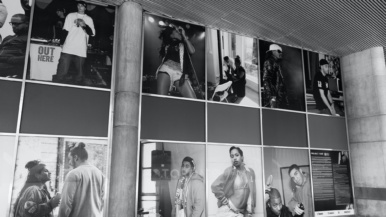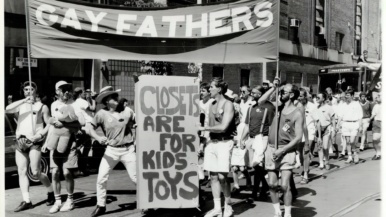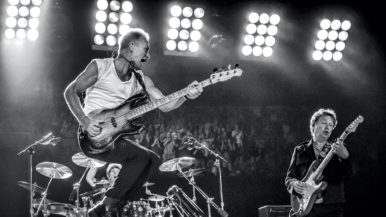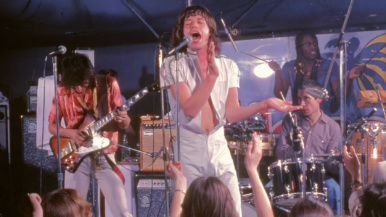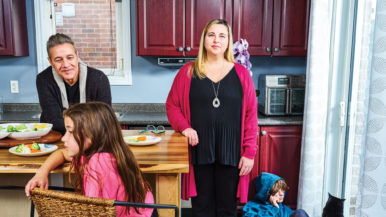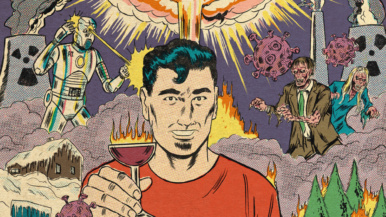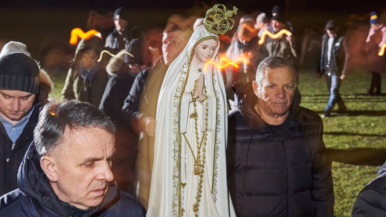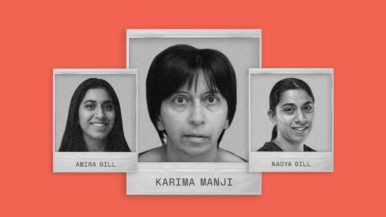How photographer Barbara Cole turns her underwater photos into lush dreamscapes
Barbara Cole began working on her latest project 20 years ago, though she didn’t know it at the time. The photographer was visiting family in England at the in the mid-’90s, taking Polaroid snapshots of London’s most famous parks. Last year, when she began photographing models underwater in her pool, she returned to those old images, inserting them in post-production as sublime backgrounds. The result is her new series, Falling Through Time, currently on display at Bau-Xi Gallery. We asked Cole to tell us how she created the dreamy shots.

“Last September, I saw a picture of what I thought was a woman wearing a toga underwater. It was actually a marble statue, and I thought, ‘I could do that. I could make my fabric look like statues.’ For a background, I thought about asking a backdrop painter to paint a mini-Versailles, but I realized it wouldn’t work. Then, suddenly, I remembered my garden shots from 20 years ago: Battersea Park, Chelsea Physic Garden, the Heath, the Hamptons. I had put the film in a storage facility so that, when the time came, I could bring it out. I always knew I was going to use it—I had just forgotten about it until then.”

“I have a smallish team. I have an assistant, Mark, who has worked with me for about 15 years. He speaks Barb, which is a very odd language. When Mark wasn’t actually shooting with me, he was scooping things out of the water. The intern does everything else—I always have an intern, and that intern is run ragged.”

“Shooting these photos, I wore a wet suit and goggles. As far as the other equipment goes, I never discuss that part of the process!”

“I mostly found my models through people I know in the dance community. Dancers are so curious about the weightlessness of their bodies, and this series was something they could do without harming themselves. I used about 12 models, did about eight shoots in total and took up to 5,000 photos.”

“I printed out pictures of the backgrounds, which I’d bring to the side of the pool and show the models. I told them, ‘If you were in that garden and you had no weight, what would you do?’ Sometimes, the models couldn’t get into it; it made some of them nervous to be the creator.”

“I started with some basics: ‘Do a somersault.’ Sometimes I would say, ‘I’d like you to run away from something as if you’re panicking,’ and I’d think, ‘Who would want to buy that one? That’s Saw II!’ Then I’d say, ‘Push off the side of the pool’; ‘Fall into the pool’; ‘Walk on your hands along the bottom of the pool.’ We’d get into our stride, and I’d ask, ‘What else can you do?’”

“Shoots would last all day, sun-up to sun-down, and the girls would compete. When they weren’t shooting, they would go into the hot tub. They’d see the other girls doing something interesting, and then they’d come back in, start working together and become best friends.”

“Over the course of about eight months, I made up 600 versions of this woman in that garden. It took me from September to April to feel like I was on the right track. I sometimes thought to myself, ‘Is it too much water?’ or, ‘Is it too kitsch?’ If you saw my outtakes, you’d go, ‘Oh, Barb, too much! Leave the flower and the leprechaun alone!’”

“With this show, I feel very reconciled. All this time, I thought, ‘What was I thinking? Why did I feel so compelled to trudge around that huge camera bag all those years ago? Did I do it because I wanted to see my family in Britain? Did I want to experience British life? Was photography a secondary reason or a primary reason for the trip?’ It turned out to be the most important reason—it just hadn’t revealed itself until now.”
For more on Cole’s process, watch this mini-doc about Falling Through Time.
